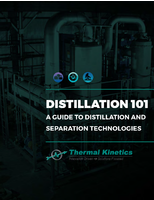Software Optimizes EMC Anechoic Chamber by Simulating Performance within +/- 1 dB Accuracy
Share:

(March 15, 2006) -- Flomerics' MicroStripes software played a key role in the design of an anechoic chamber by simulating the performance of the chamber within +/- 1 dB accuracy. Simulation accuracy is critical in designing anechoic chambers because the ANSI C63-4 and EN50147-2 standards used for electromagnetic compatibility (EMC) require that the finished chamber be able to duplicate the performance of an open area test site within +/- 4 dB. The biggest challenge is that in the frequency range from 30 to 200 MHz, which define the chamber's dimensions, the near field effects make it critical to calculate analytically the electromagnetic performance of the chamber. Anechoic chamber manufacturer Siepel has validated the ability of MicroStripes software to meet the accuracy requirements while reducing compute time to only 5% of the time required by the software used in the past. "The key to the outstanding performance of MicroStripes in this application is the limit condition for the modeling of the ferrite tiles, implemented by Flomerics especially for Siepel, which increases the time step that can be used," said Gwenaël Dun, Research and Development Engineer for Siepel. "In addition, the multi-conductor model is very useful in defining the wire structure of the antenna used."
Anechoic chambers equipped with absorber material to dampen the reflection of electromagnetic waves are used to qualify electronic devices for radiated interference and susceptibility. The greatest challenge in designing an anechoic chamber is to minimize the dimensions without increasing the wall reflection of the test chamber. Engineers simulating the chamber must deal with the large dimensions of the structure in comparison with the wavelength and the complexity of the biconical antenna used. Siepel engineers have studied several simulation methods including the Method of Moment (MoM), finite difference time domain (FDTD), and transmission line method (TLM). "We chose the TLM approach as implemented in MicroStripes because head on comparisons with other software showed it gives the best results in terms of accuracy and CPU time," Dun said.
Dun used MicroStripes to design Siepel's full and semi anechoic chamber. "The model of a chamber lined with ferrite tiles can be meshed at 150 mm with the ferrite limit condition as compared to 1 mm with classical TLM meshing and used in simulations up to 200 MHz," Dun said. "To validate our model, we compared simulation results and measurement results of qualification tests for all the position of the emission antenna given by ANSI C63-4. The deviation between the simulation and the measurements was in most cases lower than +/- 1 dB which is acceptable if we consider the error of measurements." The graphs show the comparison of simulation to measurements for one position and two polarizations of an HERMES 3 three meter compliance chamber.
"This study demonstrates that MicroStripes can predict the performance of anechoic chambers with excellent precision, making it possible for us to evaluate many more alternatives during the design process without physical prototyping," Dun concluded.
For more information, visit the MicroStripes Web site at www.microstripes.com
Flomerics Inc.
US Headquarters
4 Mount Royal Ave., Suite 450
Marlborough, MA 01752
Tel: +1 (508) 357 2012
Fax: +1 (508) 357 2013
E-mail: info@flomerics.com
Web site: www.flomerics.com
FLOMERICS LIMITED
81 Bridge Road, Hampton Court
Surrey KT8 9HH, England
Tel: +44 (0) 20 8487 3000
E-Mail: info@flomerics.co.uk
Website: www.flomerics.com




